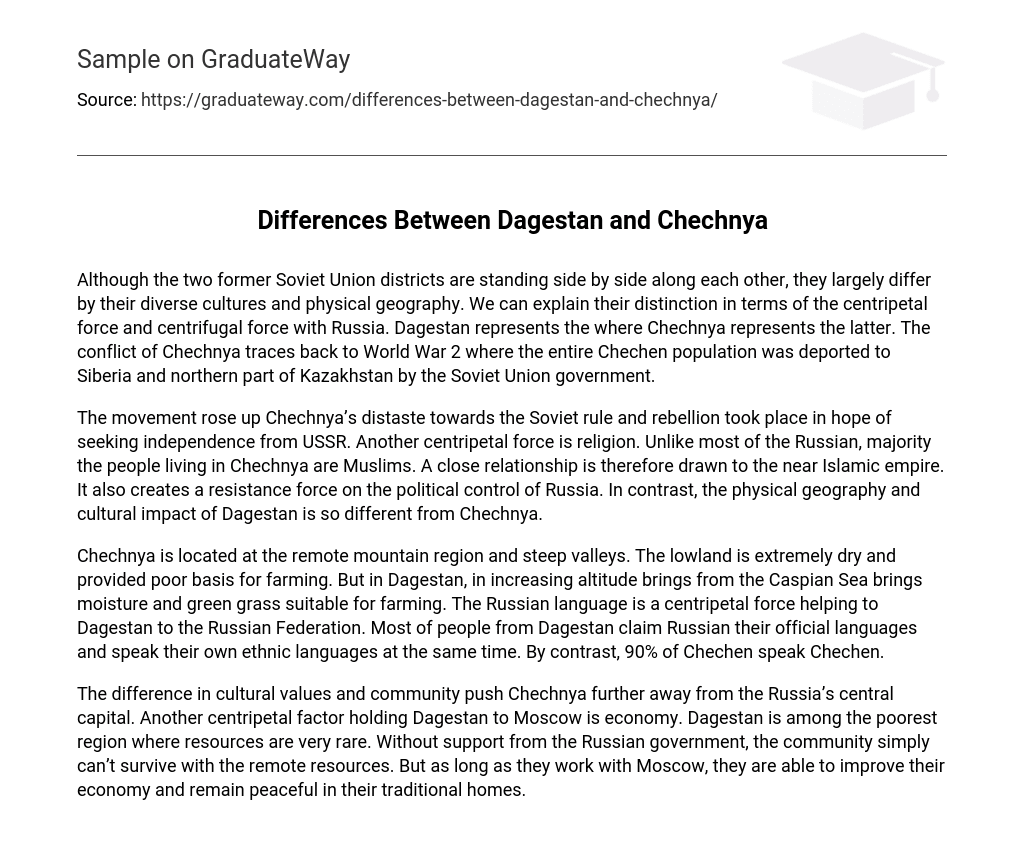Despite their different cultures and physical landscapes, the neighboring districts of the former Soviet Union can be categorized based on their relationship with Russia through centripetal and centrifugal forces. Dagestan exemplifies the former classification, while Chechnya represents the latter. The conflict in Chechnya originated during World War 2 when the Soviet Union government forcibly relocated all Chechen citizens to Siberia and northern Kazakhstan.
The Chechen uprising stemmed from their experience under Soviet rule and their aspiration for independence from the USSR. Islam, being the predominant religion in Chechnya, played a crucial role in this movement, forging strong ties with the nearby Islamic empire while resisting Russia’s political control. In contrast, Dagestan significantly varies from Chechnya in terms of physical geography and cultural impact.
Chechnya is situated in a secluded mountain area with steep valleys. The lowland is extremely arid and not conducive to farming. However, as the altitude increases in Dagestan, moisture and lush green grass from the Caspian Sea become available, making it suitable for farming. The Russian language acts as a unifying force in Dagestan, connecting it to the Russian Federation. Many people from Dagestan consider Russian as their official language and also speak their own ethnic languages simultaneously. In contrast, 90% of Chechens speak Chechen.
Although Chechnya and Dagestan have distinct cultural values and communities, they share common ties to Russia’s central capital. The economy serves as one of these shared factors. Dagestan, being a region with limited resources and impoverished conditions, heavily depends on assistance from the Russian government for its survival. Collaborating with Moscow enables them to improve their economic situation and sustain harmony in their traditional residences.





